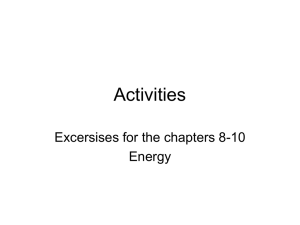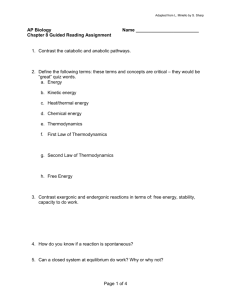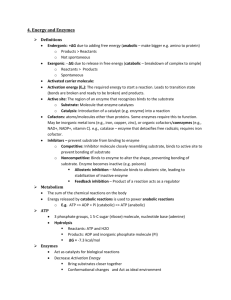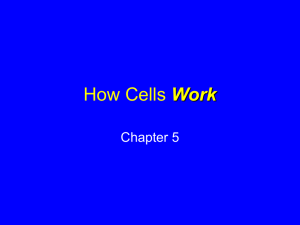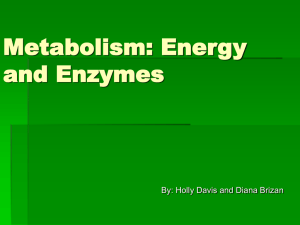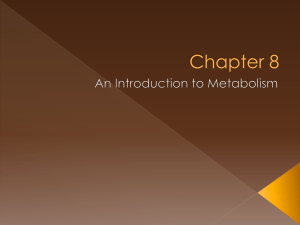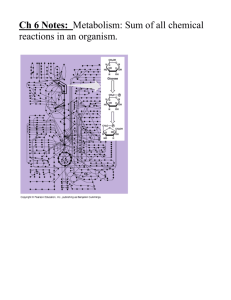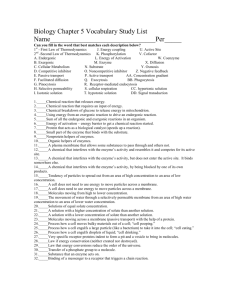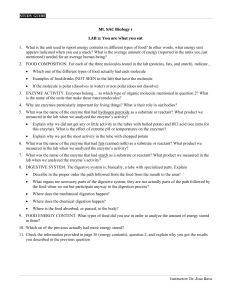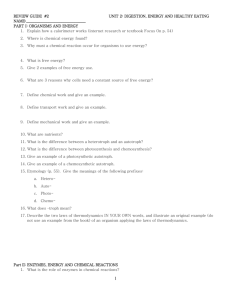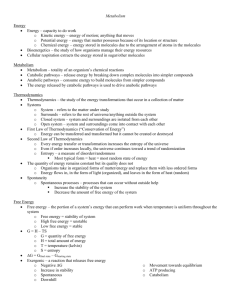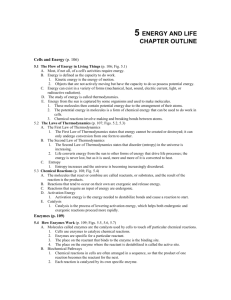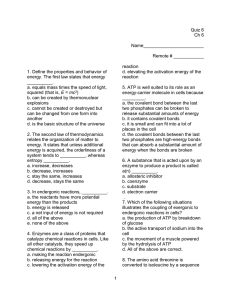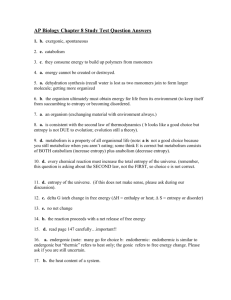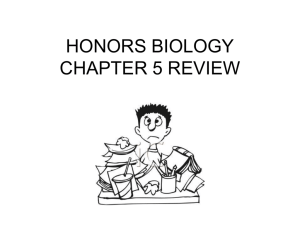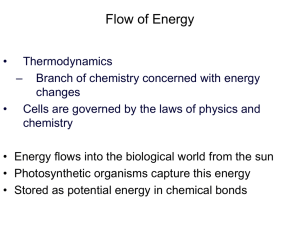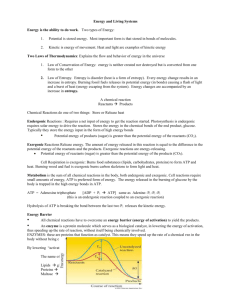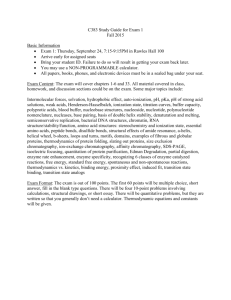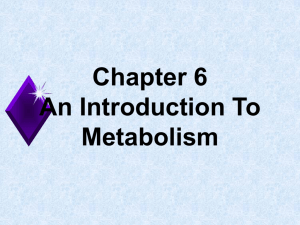Chapter 6 Exam Review
advertisement
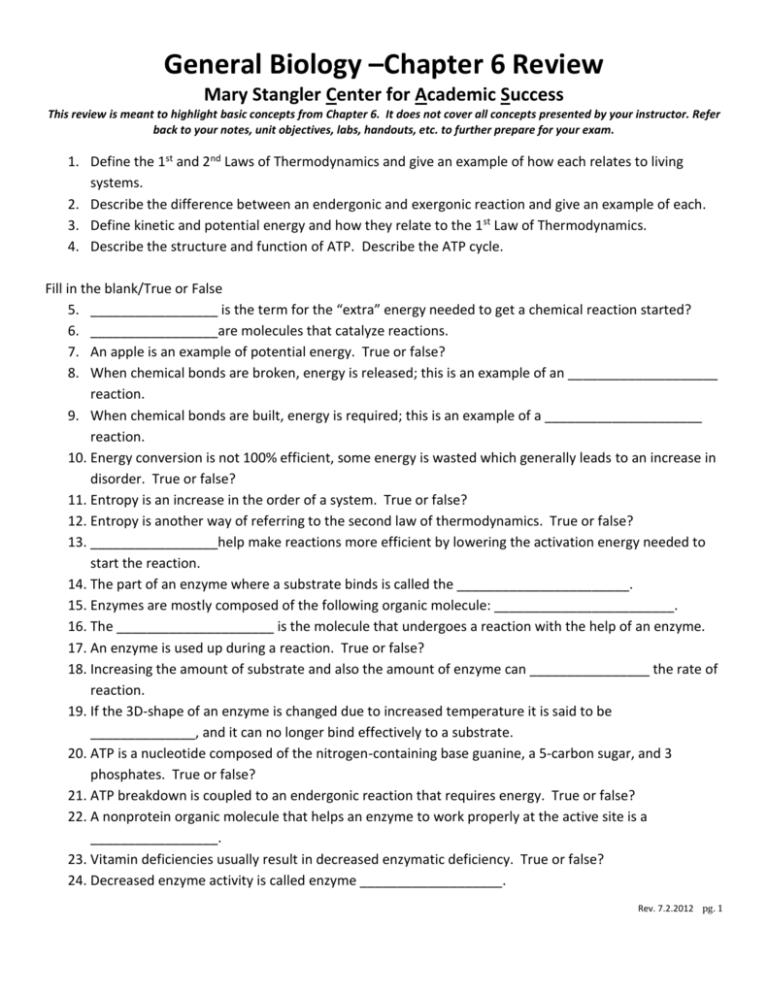
General Biology –Chapter 6 Review Mary Stangler Center for Academic Success This review is meant to highlight basic concepts from Chapter 6. It does not cover all concepts presented by your instructor. Refer back to your notes, unit objectives, labs, handouts, etc. to further prepare for your exam. 1. Define the 1st and 2nd Laws of Thermodynamics and give an example of how each relates to living systems. 2. Describe the difference between an endergonic and exergonic reaction and give an example of each. 3. Define kinetic and potential energy and how they relate to the 1 st Law of Thermodynamics. 4. Describe the structure and function of ATP. Describe the ATP cycle. Fill in the blank/True or False 5. _________________ is the term for the “extra” energy needed to get a chemical reaction started? 6. _________________are molecules that catalyze reactions. 7. An apple is an example of potential energy. True or false? 8. When chemical bonds are broken, energy is released; this is an example of an ____________________ reaction. 9. When chemical bonds are built, energy is required; this is an example of a _____________________ reaction. 10. Energy conversion is not 100% efficient, some energy is wasted which generally leads to an increase in disorder. True or false? 11. Entropy is an increase in the order of a system. True or false? 12. Entropy is another way of referring to the second law of thermodynamics. True or false? 13. _________________help make reactions more efficient by lowering the activation energy needed to start the reaction. 14. The part of an enzyme where a substrate binds is called the _______________________. 15. Enzymes are mostly composed of the following organic molecule: ________________________. 16. The _____________________ is the molecule that undergoes a reaction with the help of an enzyme. 17. An enzyme is used up during a reaction. True or false? 18. Increasing the amount of substrate and also the amount of enzyme can ________________ the rate of reaction. 19. If the 3D-shape of an enzyme is changed due to increased temperature it is said to be ______________, and it can no longer bind effectively to a substrate. 20. ATP is a nucleotide composed of the nitrogen-containing base guanine, a 5-carbon sugar, and 3 phosphates. True or false? 21. ATP breakdown is coupled to an endergonic reaction that requires energy. True or false? 22. A nonprotein organic molecule that helps an enzyme to work properly at the active site is a _________________. 23. Vitamin deficiencies usually result in decreased enzymatic deficiency. True or false? 24. Decreased enzyme activity is called enzyme ___________________. Rev. 7.2.2012 pg. 1 Matching: A – endergonic or B -exergonic 25. ______Release energy 26. ______Absorb energy 27. ______Has a negative ΔG and occur spontaneously 28. ______Has a positive ΔG and occur nonspontaneously 29. ______Energy is released 30. ______Require an input of energy 31. ______Reactants have less free energy than products 32. ______Reactants have more free energy than products 33. ______Catabolic reactions 34. ______Anabolic reactions 35. ______Photosynthesis 36. ______Cellular Respiration Rev. 7.2.2012 pg. 2

